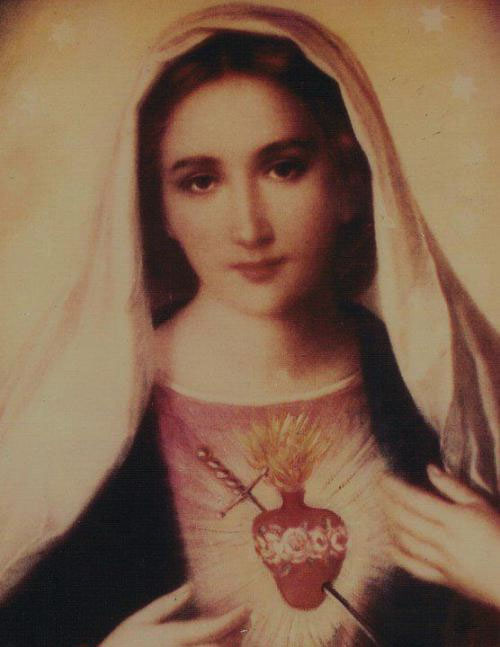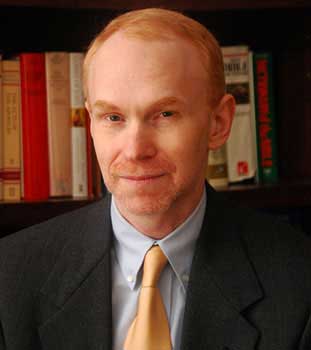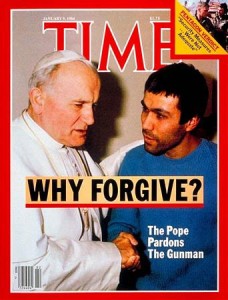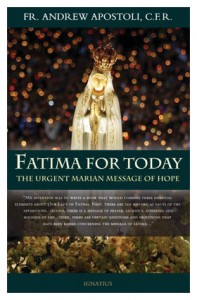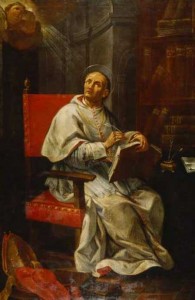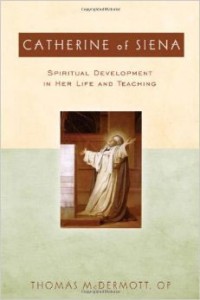The Nine Ways of Prayer of St. Dominic
[powerpress]
The Second Way of Prayer
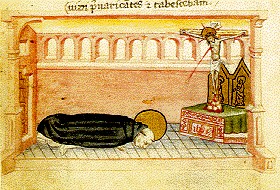 St. Dominic used to pray by throwing himself outstretched upon the ground, lying on his face. He would feel great remorse in his heart and call to mind those words of the Gospel, saying sometimes in a voice loud enough to be heard: “O God, be merciful to me, a sinner.” [Luke 18:13] With devotion and reverence he repeated that verse of David: “I am he that has sinned, I have done wickedly.” [II Kings 24:17]. Then he would weep and groan vehemently and say: “I am not worthy to see the heights of heaven because of the greatness of my iniquity, for I have aroused thy anger and done what is evil in thy sight”(28). From the psalm: “Deus auribus nostris audivimus” he said fervently and devoutly: “For our soul is cast down to the dust, our belly is flat on the earth!” [Ps. 43:25]. To this he would add: “My soul is prostrate in the dust; quicken thou me according to thy word” [Ps. 118:25].
St. Dominic used to pray by throwing himself outstretched upon the ground, lying on his face. He would feel great remorse in his heart and call to mind those words of the Gospel, saying sometimes in a voice loud enough to be heard: “O God, be merciful to me, a sinner.” [Luke 18:13] With devotion and reverence he repeated that verse of David: “I am he that has sinned, I have done wickedly.” [II Kings 24:17]. Then he would weep and groan vehemently and say: “I am not worthy to see the heights of heaven because of the greatness of my iniquity, for I have aroused thy anger and done what is evil in thy sight”(28). From the psalm: “Deus auribus nostris audivimus” he said fervently and devoutly: “For our soul is cast down to the dust, our belly is flat on the earth!” [Ps. 43:25]. To this he would add: “My soul is prostrate in the dust; quicken thou me according to thy word” [Ps. 118:25].
Wishing to teach the brethren to pray reverently, he would sometimes say to them: When those devout Magi entered the dwelling they found the child with Mary, his mother, and falling down they worshipped him. There is no doubt that we too have found the God-Man with Mary, his handmaid. “Come, let us adore and fall down in prostration before God, and let us weep before God, and let us weep before the Lord that made us” [Ps. 94:61. He would also exhort the young men, and say to them: If you cannot weep for your own sins because you have none, remember that there are many sinners who can be disposed for mercy and charity. It was for these that the prophets lamented; and when Jesus saw them, he wept bitterly. The holy David also wept as he said: “I beheld the transgressors and began to grieve” [Ps. 118:158].
The text was taken from the book St. Dominic: Biographical Documents, edited by Fr. Francis C. Lehner, O.P. The chapter “The Nine Ways of Prayer of St. Dominic” was translated by Fr. Andrew Kolzow, O.P.
“The Nine Ways of Prayer of St. Dominic” from St. Dominic: Biographical Documents, © 1964 by The Thomist Press.
Nihil obstat: Reverend A. D. Lee, O.P. Censor Deputatus
Imprimatur: Patrick A. O’Boyle Archbishop of Washington
April 29,1964
For the complete list visit: Â 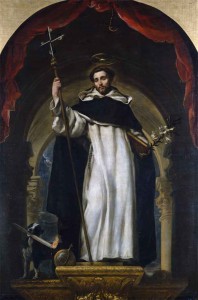
The Nine Ways of Prayer of St. Dominic
Tags: catholic, catholic podcast, catholic prayer, cathollc spirituality
This entry was posted on Friday, August 1st, 2014 at 5:45 am
You can follow any responses to this entry through the RSS 2.0 feed.
O Most Blessed Mother, heart of love, heart of mercy, ever listening, caring, consoling, hear our prayer. As your children, we implore your intercession with Jesus your Son. Receive with understanding and compassion the petitions we place before you today, especially those so deep in our heart.
We are comforted in knowing your heart is ever open to those who ask for your prayer. We trust to your gentle care and intercession, those whom we love and who are sick or lonely or hurting. Help all of us, Holy Mother, to bear our burdens in this life until we may share eternal life and peace with God forever.
Amen.
Tags: catholic, catholic podcast, catholic prayer, cathollc spirituality
This entry was posted on Friday, August 1st, 2014 at 3:10 am
You can follow any responses to this entry through the RSS 2.0 feed.
The Nine Ways of Prayer of St. Dominic
Holy teachers like Augustine, Ambrose, Gregory, Hilary, Isidore, John Chrysostom, John Damascene, Bernard, and other saintly Greek and Latin doctors have discoursed on prayer at great length. They have encouraged and described it, pointed out its necessity and value, explained the method, the dispositions which are required, and the impediments which stand in its way. In learned books, the glorious and venerable doctor, Brother Thomas Aquinas, and Albert, of the Order of Preachers, as well as William in his treatise on the virtues, have considered admirably and in a holy, devout, and beautiful manner that form of prayer in which the soul makes use of the members of the body to raise itself more devoutly to God. In this way the soul, in moving the body, is moved by it. At times it becomes rapt in ecstasy as was Saint Paul, or is caught up in a rapture of the spirit like the prophet David. Saint Dominic often prayed in this way, and it is fitting that we say something of his method.
Certainly many saints of both the Old and New Testament are known to have prayed like this at times. Such a method serves to enkindle devotion by the alternate action of soul upon body and body upon soul. Prayer of this kind would cause Saint Dominic to be bathed in tears, and would arouse the fervor of his holy will to such intensity that his bodily members could not be restrained from manifesting his devotion by certain signs. As a result, the spirit of the supplicant was sometimes raised up during its entreaties, petitions, and thanksgivings.
The following, then, are the special modes of prayer, besides those very devout and customary forms, which Saint Dominic used during the celebration of Mass and the praying of the psalmody. In choir or along the road, he was often seen lifted suddenly out of himself and raised up with God and the angels.
The First Way of Prayer
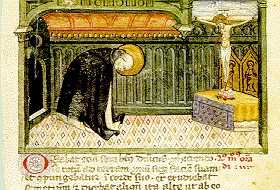 Saint Dominic’s first way of prayer was to humble himself before the altar as if Christ, signified by the altar, were truly and personally present and not in symbol alone. He would say with Judith: “O Lord, God, the prayer of the humble and the meek hath always pleased Thee [Judith 9:16]. “It was through humility that the Canaanite woman and the prodigal son obtained what they desired; as for me, “I am not worthy that Thou shouldst come under my roof” [Matt. 8:8] for “I have been humbled before you exceedingly, O Lord [Ps. 118:107].:
Saint Dominic’s first way of prayer was to humble himself before the altar as if Christ, signified by the altar, were truly and personally present and not in symbol alone. He would say with Judith: “O Lord, God, the prayer of the humble and the meek hath always pleased Thee [Judith 9:16]. “It was through humility that the Canaanite woman and the prodigal son obtained what they desired; as for me, “I am not worthy that Thou shouldst come under my roof” [Matt. 8:8] for “I have been humbled before you exceedingly, O Lord [Ps. 118:107].:
In this way our holy father, standing erect, bowed his head and humbly considering Christ, his Head, compared his lowliness with the excellence of Christ. He then gave himself completely in showing his veneration. The brethren were taught to do this whenever they passed before the humiliation of the Crucified One in order that Christ, so greatly humbled for us, might see us humbled before his majesty. And he commanded the friars to humble themselves in this way before the entire Trinity whenever they chanted solemnly: “Glory be to the Father, and to the Son, and to the Holy Spirit.” In this manner of profoundly inclining his head, as shown in the drawing, Saint Dominic began his prayer.
The text was taken from the book St. Dominic: Biographical Documents, edited by Fr. Francis C. Lehner, O.P. The chapter “The Nine Ways of Prayer of St. Dominic” was translated by Fr. Andrew Kolzow, O.P.
“The Nine Ways of Prayer of St. Dominic” from St. Dominic: Biographical Documents, © 1964 by The Thomist Press.
Nihil obstat: Reverend A. D. Lee, O.P. Censor Deputatus
Imprimatur: Patrick A. O’Boyle Archbishop of Washington
April 29,1964
Tags: catholic, catholic podcast, catholic prayer, cathollc spirituality
This entry was posted on Thursday, July 31st, 2014 at 7:42 pm
You can follow any responses to this entry through the RSS 2.0 feed.
Dr. Matthew Bunson discusses the life, times and teachings of St. Anslem pt 1
- Born: 1033, Aosta, Italy
- Died: April 21, 1109, Canterbury, United Kingdom
- Full name:Â Anselmo d’Aosta
- Books: Proslogion, More
From Vatican.va, an excerpt from the teachings of Pope Benedict XVI General Audience 2009
He is also known as Anselm of Bec and Anselm of Canterbury because of the cities with which he was associated. Who is this figure to whom three places, distant from one another and located in three different nations Italy, France, England feel particularly bound? A monk with an intense spiritual life, an excellent teacher of the young, a theologian with an extraordinary capacity for speculation, a wise man of governance and an intransigent defender of libertas Ecclesiae, of the Church’s freedom, Anselm is one of the eminent figures of the Middle Ages who was able to harmonize all these qualities, thanks to the profound mystical experience that always guided his thought and his action.
St Anselm was born in 1033 (or at the beginning of 1034) in Aosta, the first child of a noble family. His father was a coarse man dedicated to the pleasures of life who squandered his possessions. On the other hand, Anselm’s mother was a profoundly religious woman of high moral standing (cf. Eadmer, Vita Sancti Anselmi, PL 159, col. 49). It was she, his mother, who saw to the first human and religious formation of her son whom she subsequently entrusted to the Benedictines at a priory in Aosta. Anselm, who since childhood as his biographer recounts imagined that the good Lord dwelled among the towering, snow-capped peaks of the Alps, dreamed one night that he had been invited to this splendid kingdom by God himself, who had a long and affable conversation with him and then gave him to eat “a very white bread roll” (ibid., col. 51). This dream left him with the conviction that he was called to carry out a lofty mission. At the age of 15, he asked to be admitted to the Benedictine Order but his father brought the full force of his authority to bear against him and did not even give way when his son, seriously ill and feeling close to death, begged for the religious habit as a supreme comfort. After his recovery and the premature death of his mother, Anselm went through a period of moral dissipation. He neglected his studies and, consumed by earthly passions, grew deaf to God’s call. He left home and began to wander through France in search of new experiences. Three years later, having arrived in Normandy, he went to the Benedictine Abbey of Bec, attracted by the fame of Lanfranc of Pavia, the Prior. For him this was a providential meeting, crucial to the rest of his life. Under Lanfranc’s guidance Anselm energetically resumed his studies and it was not long before he became not only the favourite pupil but also the teacher’s confidante. His monastic vocation was rekindled and, after an attentive evaluation, at the age of 27 he entered the monastic order and was ordained a priest. Ascesis and study unfolded new horizons before him, enabling him to rediscover at a far higher level the same familiarity with God which he had had as a child.
When Lanfranc became Abbot of Caen in 1063, Anselm, after barely three years of monastic life, was named Prior of the Monastery of Bec and teacher of the cloister school, showing his gifts as a refined educator. He was not keen on authoritarian methods; he compared young people to small plants that develop better if they are not enclosed in greenhouses and granted them a “healthy” freedom. He was very demanding with himself and with others in monastic observance, but rather than imposing his discipline he strove to have it followed by persuasion. Upon the death of Abbot Herluin, the founder of the Abbey of Bec, Anselm was unanimously elected to succeed him; it was February 1079. In the meantime numerous monks had been summoned to Canterbury to bring to their brethren on the other side of the Channel the renewal that was being brought about on the continent. Their work was so well received that Lanfranc of Pavia, Abbot of Caen, became the new Archbishop of Canterbury. He asked Anselm to spend a certain period with him in order to instruct the monks and to help him in the difficult plight in which his ecclesiastical community had been left after the Norman conquest. Anselm’s stay turned out to be very fruitful; he won such popularity and esteem that when Lanfranc died he was chosen to succeed him in the archiepiscopal See of Canterbury. He received his solemn episcopal consecration in December 1093.
For more visit Vatican.va
Dr. Matthew Bunson, Senior Fellow of the St. Paul Center for Biblical Theology, is one of the United States’ leading authorities on the papacy and the Church.
His books include: The Encyclopedia of Catholic History; The Encyclopedia of Saints; Papal Wisdom; All Shall Be Well; Encyclopedia of the Roman Empire; and The Angelic Doctor: The Life and World of St. Thomas Aquinas; The Pope Encyclopedia; We Have a Pope! Benedict XVI, the first Catholic biography of the Holy Father in the English language; the Encyclopedia of U.S. Catholic History; Pope Francis. His also the editor of OSV’s “The Catholic Answer” magazine.
Tags: catholic, catholic podcast, catholic prayer, cathollc spirituality
This entry was posted on Friday, July 25th, 2014 at 6:18 am
You can follow any responses to this entry through the RSS 2.0 feed.
[powerpress]
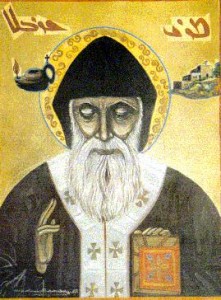 For the text of the Chaplet and other prayers visit the Discerning Hearts St. Charbel Page
For the text of the Chaplet and other prayers visit the Discerning Hearts St. Charbel Page
Memorial: 24 December
Son of a mule driver. Raised by an uncle who opposed the boy’s youthful piety. The boy’s favorite book was Thomas a Kempis’ The Imitation of Christ. At age 23 he snuck away to join the Baladite monastery of Saint Maron at Annaya where he took the name Charbel in memory of a 2nd century martyr. Professed his solemn vows in 1853. Ordained in 1859, becoming a heiromonk. He lived as a model monk, but dreamed of living like the ancient desert fathers. Hermit from 1875 until his death 23 years later, living on the bare minimums of everything. Gained a reputation for holiness and was much sought for counsel and blessing. He had a great personal devotion to the Blessed 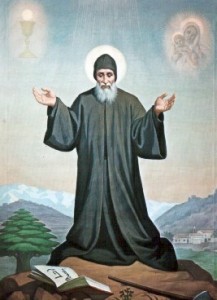 Sacrament, and was known to levitate during his prayers. Briefly paralyzed for unknown reasons just before his death on Christmas eve, 1898.
Sacrament, and was known to levitate during his prayers. Briefly paralyzed for unknown reasons just before his death on Christmas eve, 1898.
“…a hermit of the Lebanese mountain is inscribed in the number of the blessed, a new eminent member of monastic sanctity is enriching, by his example and his intercession, the entire Christian people. May he make us understand, in a world largely fascinated by wealth and comfort, the paramount value of poverty, penance and asceticism, to liberate the soul in its ascent to God…” Pope Paul VI, October 9, 1977
Born: 8 May 1828 at Beka-Kafra, Lebanon as Joseph Zaroun Makhlouf
Died: 24 December 1898 at Annaya of natural causes
Beatified: 1965 by Pope Paul VI
Canonized: 9 October 1977 by Pope Paul VI
Tags: catholic, catholic podcast, catholic prayer, cathollc spirituality, pope paul vi, St. Charbel
This entry was posted on Thursday, July 24th, 2014 at 12:29 am
You can follow any responses to this entry through the RSS 2.0 feed.
 Who is she? Men and women throughout the centuries have tried to define her…all I know for sure is that she was freed and healed from 7 demons, stayed with Our Lady at the foot of the Cross, and was chosen by Christ to be the first witness to the Resurrection…she would become the Apostle to the Apostles…that’s enough for me.  Wow! Who is she? One of the
Who is she? Men and women throughout the centuries have tried to define her…all I know for sure is that she was freed and healed from 7 demons, stayed with Our Lady at the foot of the Cross, and was chosen by Christ to be the first witness to the Resurrection…she would become the Apostle to the Apostles…that’s enough for me.  Wow! Who is she? One of the 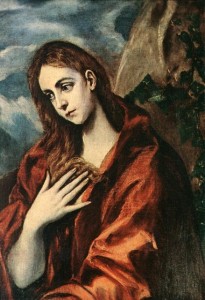 greatest saints…ever!
greatest saints…ever!
One of the best conversations we’ve had about St. Mary Magdalene was with the wonderful Amy Welborn, author of “Decoding Mary Magdalene”
[powerpress]
Artists and musicians have tried to capture Mary Magdalene;  here’s a beautiful tribute to their efforts:
Tags: amy welborn, catholic, catholic podcast, catholic prayer, cathollc spirituality, demons, our sunday visitor, saints, st mary magdalene, witness, women
This entry was posted on Tuesday, July 22nd, 2014 at 5:07 am
You can follow any responses to this entry through the RSS 2.0 feed.
Bruce and I had a great conversation with Mike Aquilina about the great St. Benedict.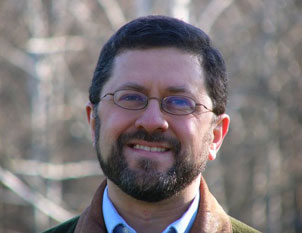
[powerpress]
Here is a teaching from another Benedict our Holy Father Pope Benedict XVI
St Peter’s Square
Wednesday, 9 April 2008
Dear Brothers and Sisters,
Today, I would like to speak about Benedict, the Founder of Western Monasticism and also the Patron of my Pontificate. I begin with words that St Gregory the Great wrote about St Benedict: “The man of God who shone on this earth among so many miracles was just as brilliant in the eloquent exposition of his teaching” (cf. Dialogues II, 36). The great Pope wrote these words in 592 A.D. The holy monk, who had died barely 50 years earlier, lived on in people’s memories and especially in the flourishing religious Order he had founded. St Benedict of Norcia, with his life and his work, had a fundamental influence on the development of European civilization and culture. The most important source on Benedict’s life is the second book of St Gregory the Great’s Dialogues. It is not a biography in the classical sense. In
accordance with the ideas of his time, by giving the example of a real man – St Benedict, in this case – Gregory wished to illustrate the ascent to the peak of contemplation which can be achieved by those who abandon themselves to God. He therefore gives us a model for human life in the climb towards the summit of perfection. St Gregory the Great also tells in this book of the Dialogues of many miracles worked by the Saint, and here too he does not merely wish to recount something curious but rather to show how God, by admonishing, helping and even punishing, intervenes in the practical situations of man’s life. Gregory’s aim was to demonstrate that God is not a distant hypothesis placed at the origin of the world but is present in the life of man, of every man.
This perspective of the “biographer” is also explained in light of the general context of his time: straddling the fifth and sixth centuries, “the world was overturned by a tremendous crisis of values and institutions caused by the collapse of the Roman Empire, the invasion of new peoples and the decay of morals”. But in this terrible situation, here, in this very city of Rome, Gregory presented St Benedict as a “luminous star” in order to point the way out of the “black night of history” (cf. John Paul II, 18 May 1979).
In fact, the Saint’s work and particularly his Rule were to prove heralds of an authentic spiritual leaven which, in the course of the centuries, far beyond the boundaries of his country and time, changed the face of Europe following the fall of the political unity created by the Roman Empire, inspiring a new spiritual and cultural unity, that of the Christian faith shared by the peoples of the Continent. This is how the reality we call “Europe” came into being.
St Benedict was born around the year 480. As St Gregory said, he came “ex provincia Nursiae” – from the province of Norcia. His well-to-do parents sent him to study in Rome. However, he did not stay long in the Eternal City. As a fully plausible explanation, Gregory mentions that the young Benedict was put off by the dissolute lifestyle of many of his fellow students and did not wish to make the same mistakes. He wanted only to please God: “soli Deo placere desiderans” (II Dialogues, Prol. 1). Thus, even before he finished his studies, Benedict left Rome and withdrew to the solitude of the mountains east of Rome. After a short stay in the village of Enfide (today, Affile), where for a time he lived with a “religious community” of monks, he became a hermit in the neighbouring locality of Subiaco. He lived there completely alone for three years in a cave which has been the heart of a Benedictine Monastery called the “Sacro Speco” (Holy Grotto) since the early Middle Ages. The period in Subiaco, a time of solitude with God, was a time of maturation for Benedict. It was here that he bore and overcame the three fundamental temptations of every human being: the temptation of self-affirmation and the desire to put oneself at the centre, the temptation of sensuality and, lastly, the temptation of anger and revenge. In fact, Benedict was convinced that only after overcoming these temptations would he be able to say a useful word to others about their own situations of neediness. Thus, having tranquilized his soul, he could be in full control of the drive of his ego and thus create peace around him. Only then did he decide to found his first monasteries in the Valley of the Anio, near Subiaco.
In the year 529, Benedict left Subiaco and settled in Monte Cassino. Some have explained this move as an escape from the intrigues of an envious local cleric. However, this attempt at an explanation hardly proved convincing since the latter’s sudden death did not induce Benedict to return (II Dialogues, 8). In fact, this decision was called for because he had entered a new phase of inner maturity and monastic experience. According to Gregory the Great, Benedict’s exodus from the remote Valley of the Anio to Monte Cassio – a plateau dominating the vast surrounding plain which can be seen from afar – has a symbolic character: a hidden monastic life has its own raison d’être but a monastery also has its public purpose in the life of the Church and of society, and it must give visibility to the faith as a force of life. Indeed, when Benedict’s earthly life ended on 21 March 547, he bequeathed with his Rule and the Benedictine family he founded a heritage that bore fruit in the passing centuries and is still bearing fruit throughout the world. (more…)
Tags: benedictines, catholic, catholic podcast, catholic prayer, cathollc spirituality, Europe, mike aquilina, Roman Empire, st benedict, st. paul center for biblical theology
This entry was posted on Friday, July 11th, 2014 at 5:02 am
You can follow any responses to this entry through the RSS 2.0 feed.
Dr. Matthew Bunson discusses the life, times and teachings of St. John Chrysostom pt 2
-
Born: 347 AD, Antioch, Turkey
-
Died: September 14, 407 AD, Comana Pontica
  - Homilies on the Gospel of St. MatthewÂ
  - Homilies on ActsÂ
  - Homilies on RomansÂ
  - Homilies on First CorinthiansÂ
  - Homilies on Second CorinthiansÂ
  - Homilies on EphesiansÂ
  - Homilies on PhilippiansÂ
  - Homilies on ColossiansÂ
  - Homilies on First ThessaloniansÂ
  - Homilies on Second ThessaloniansÂ
  - Homilies on First TimothyÂ
  - Homilies on Second TimothyÂ
  - Homilies on TitusÂ
  - Homilies on PhilemonÂ
  - Commentary on GalatiansÂ
  - Homilies on the Gospel of JohnÂ
  - Homilies on the Epistle to the HebrewsÂ
  - Homilies on the StatuesÂ
  - No One Can Harm the Man Who Does Not Injure HimselfÂ
  - Two Letters to Theodore After His FallÂ
  - Letter to a Young WidowÂ
  - Homily on St. IgnatiusÂ
  - Homily on St. BabylasÂ
  - Homily Concerning “Lowliness of Mind”Â
  - Instructions to CatechumensÂ
  - Three Homilies on the Power of SatanÂ
  - Homily on the Passage “Father, if it be possible . . .”Â
  - Homily on the Paralytic Lowered Through the RoofÂ
  - Homily on the Passage “If your enemy hunger, feed him.”Â
  - Homily Against Publishing the Errors of the BrethrenÂ
  - First Homily on EutropiusÂ
  - Second Homily on Eutropius (After His Captivity)Â
  - Four Letters to OlympiasÂ
  - Letter to Some Priests of AntiochÂ
  - Correspondence with Pope Innocent IÂ
  - On the Priesthood
From Vatican.va, an excerpt from the teachings of Pope Benedict XVI General Audience 2009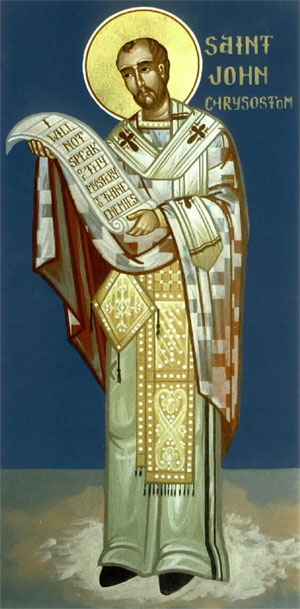
The Lord, his biographer explains, intervened with the illness at the right moment to enable John to follow his true vocation. In fact, he himself was later to write that were he to choose between the troubles of Church government and the tranquillity of monastic life, he would have preferred pastoral service a thousand times (cf. On the Priesthood, 6, 7): it was precisely to this that Chrysostom felt called.
It was here that he reached the crucial turning point in the story of his vocation: a full-time pastor of souls! Intimacy with the Word of God, cultivated in his years at the hermitage, had developed in him an irresistible urge to preach the Gospel, to give to others what he himself had received in his years of meditation. The missionary ideal thus launched him into pastoral care, his heart on fire.
Between 378 and 379, he returned to the city. He was ordained a deacon in 381 and a priest in 386, and became a famous preacher in his city’s churches. He preached homilies against the Arians, followed by homilies commemorating the Antiochean martyrs and other important liturgical celebrations: this was an important teaching of faith in Christ and also in the light of his Saints.
The year 387 was John’s “heroic year”, that of the so-called “revolt of the statues”. As a sign of protest against levied taxes, the people destroyed the Emperor’s statues. It was in those days of Lent and the fear of the Emperor’s impending reprisal that Chrysostom gave his 22 vibrant Homilies on the Statues, whose aim was to induce repentance and conversion. This was followed by a period of serene pastoral care (387-397).
Chrysostom is among the most prolific of the Fathers: 17 treatises, more than 700 authentic homilies, commentaries on Matthew and on Paul (Letters to the Romans, Corinthians, Ephesians and Hebrews) and 241 letters are extant. He was not a speculative theologian.
Nevertheless, he passed on the Church’s tradition and reliable doctrine in an age of theological controversies, sparked above all by Arianism or, in other words, the denial of Christ’s divinity. He is therefore a trustworthy witness of the dogmatic development achieved by the Church from the fourth to the fifth centuries.
His is a perfectly pastoral theology in which there is constant concern for consistency between thought expressed via words and existential experience. It is this in particular that forms the main theme of the splendid catecheses with which he prepared catechumens to receive Baptism.
On approaching death, he wrote that the value of the human being lies in “exact knowledge of true doctrine and in rectitude of life” (Letter from Exile). Both these things, knowledge of truth and rectitude of life, go hand in hand: knowledge has to be expressed in life. All his discourses aimed to develop in the faithful the use of intelligence, of true reason, in order to understand and to put into practice the moral and spiritual requirements of faith.
For more visit Vatican.va
Dr. Matthew Bunson, Senior Fellow of the St. Paul Center for Biblical Theology, is one of the United States’ leading authorities on the papacy and the Church.
His books include: The Encyclopedia of Catholic History; The Encyclopedia of Saints; Papal Wisdom; All Shall Be Well; Encyclopedia of the Roman Empire; and The Angelic Doctor: The Life and World of St. Thomas Aquinas; The Pope Encyclopedia; We Have a Pope! Benedict XVI, the first Catholic biography of the Holy Father in the English language; the Encyclopedia of U.S. Catholic History; Pope Francis. His also the editor of OSV’s “The Catholic Answer” magazine.
Tags: catholic, catholic podcast, catholic prayer, cathollc spirituality
This entry was posted on Wednesday, July 2nd, 2014 at 12:51 pm
You can follow any responses to this entry through the RSS 2.0 feed.
“Under the Mantle: Marian Thoughts from a 21st Century Priest” is fantastic!  Fr. Donald Calloway’s books just keep getting better and better.  In this work, he 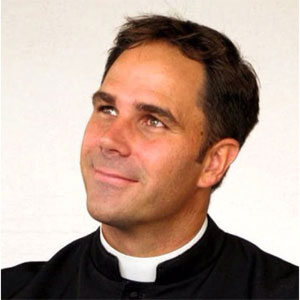 begins this journey with Our Lady, who then guides the reader through the rich treasures found in the Church established by her Son, Jesus Christ.  Through the Sacraments, to the depth of devotion found in our spiritual practices, and then with a  rich appreciation of what authentic manhood and femininity truly are,  Fr. Calloway explores the many facets of our faith.  This book is a book well suited for everyday mystagogia.  Without ever dumbing down the content, Fr. Calloway’s writing style is engaging and designed for “joe or josephine”  pew person.  This book is perfect for those who are in the RCIA, for folks who have completed a consecration preparation to Our Lady, or for anyone just looking for a more penetrating study of the faith.  You will not be disappointed!  And what a beautiful tribute to Our Blessed Mother!
begins this journey with Our Lady, who then guides the reader through the rich treasures found in the Church established by her Son, Jesus Christ.  Through the Sacraments, to the depth of devotion found in our spiritual practices, and then with a  rich appreciation of what authentic manhood and femininity truly are,  Fr. Calloway explores the many facets of our faith.  This book is a book well suited for everyday mystagogia.  Without ever dumbing down the content, Fr. Calloway’s writing style is engaging and designed for “joe or josephine”  pew person.  This book is perfect for those who are in the RCIA, for folks who have completed a consecration preparation to Our Lady, or for anyone just looking for a more penetrating study of the faith.  You will not be disappointed!  And what a beautiful tribute to Our Blessed Mother!
[powerpress]
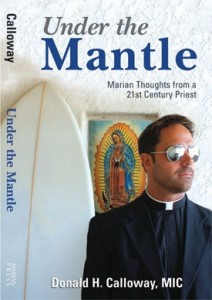 You can find the book here
You can find the book here
“We are living in an extraordinary time of grace and mercy. It is a time in which many people, through the intercession of the Blessed Virgin Mary, are experiencing a renewed appreciation for the sacred and unchanging truths of Catholicism. Though the vast majority of universities and colleges today indoctrinate their students into the dictatorship of moral relativism, the media puts forth an ideology of rampant secularism, and the political realm is filled with proponents of a culture of death, nevertheless, it is in these times that Jesus, through the Immaculata, is raising up a new generation of Catholics. In Under the Mantle: Marian Thoughts from a 21st Century Priest, Fr. Calloway masterfully blends together aspects of his own conversion story with profound theological insights into Catholicism, presenting everyone from “Joe six-pack in the pew” to a seminary rector with incredibly vivid and thought-provoking analogies into why it is so important for a Christian to live under the mantle of Mary. I very highly recommend that everyone read this book! ”
-Very Rev. Douglas Mosey, C.S.B., Ph.D. President-Rector
Holy Apostles College & Seminary. Cromwell, CT
Also check out: IP#16 Fr. Donald Calloway – No Turning Back on Inside the Pages
Tags: calloway, catholic, catholic podcast, catholic prayer, cathollc spirituality, Century Priest, faith, Mantle Marian Thoughts, marian helpers, marian press
This entry was posted on Saturday, June 28th, 2014 at 12:21 am
You can follow any responses to this entry through the RSS 2.0 feed.
By far, this book is the BEST on the subject of the Sacred Heart of Jesus that I have seen in a very long time.  So very 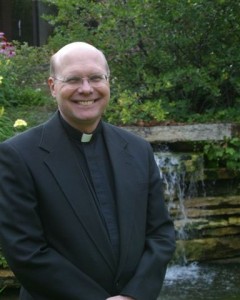 practical and deep in its spiritual appreciation of this beautifully essential devotion for our lives, Fr. James Kubicki helps all to rediscover  the devotion to the Sacred Heart.  He presents the history of this timely devotion, with help of the apostles, Church Fathers, the Saints and contemporary Catholics,  in an engaging and easily digestible way.  And the prayers…the incredibly deep and radiant prayers…Fr. Kubicki breaks them open a new for us all to appreciate, encouraging us not to “say the prayers”, but to “pray the prayers”.  Wonderful, simply wonderful!  I cannot recommended this work more highly.  Pick up more than one copy and become a missionary of the Sacred Heart of Jesus by passing copies on to others
practical and deep in its spiritual appreciation of this beautifully essential devotion for our lives, Fr. James Kubicki helps all to rediscover  the devotion to the Sacred Heart.  He presents the history of this timely devotion, with help of the apostles, Church Fathers, the Saints and contemporary Catholics,  in an engaging and easily digestible way.  And the prayers…the incredibly deep and radiant prayers…Fr. Kubicki breaks them open a new for us all to appreciate, encouraging us not to “say the prayers”, but to “pray the prayers”.  Wonderful, simply wonderful!  I cannot recommended this work more highly.  Pick up more than one copy and become a missionary of the Sacred Heart of Jesus by passing copies on to others
[powerpress]
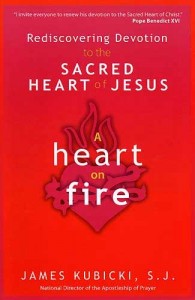 You can find the book here
You can find the book here
“At first communion I was taught to say first thing every morning, Sacred Heart of Jesus, I place all my trust in Thee!’ Reading Father Kubicki’s splendid book has only made that prayer all the more sincere and meaningful.” —Most Reverend Timothy M. Dolan, Archbishop of New York
“A fresh and attractive reconsideration of this centuries-old devotion in the Catholic Church. Blessed Basile Moreau (1873), founder of the Congregation of Holy Cross, who entrusted his priests to the Sacred 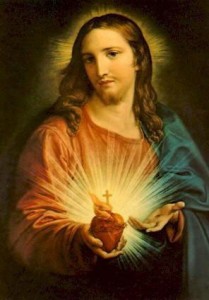 Heart of Jesus, wrote: ‘The primary purpose of the devotion to the Sacred Heart is to return love for love.’ Fr. Kubicki develops this theme in a way that speaks well to today’s generation of believers.” —Rev. Peter D. Rocca, C.S.C., Rector, Basilica of the Sacred Heart, University of Notre Dame
Heart of Jesus, wrote: ‘The primary purpose of the devotion to the Sacred Heart is to return love for love.’ Fr. Kubicki develops this theme in a way that speaks well to today’s generation of believers.” —Rev. Peter D. Rocca, C.S.C., Rector, Basilica of the Sacred Heart, University of Notre Dame
“I invite everyone to renew his devotion to the Sacred Heart of Christ in the month of June, making use of the traditional prayer of the offering of the day and keeping in mind the intentions that I have proposed to the whole Church.” —Pope Benedict XVI, Angelus Address, June 1, 2008
Tags: catholic, catholic podcast, catholic prayer, cathollc spirituality
This entry was posted on Friday, June 27th, 2014 at 9:30 am
You can follow any responses to this entry through the RSS 2.0 feed.
[powerpress]Msgr. Esseff reflects on Our Lady of Fatima and the power of the Holy Rosary. It is a tremendous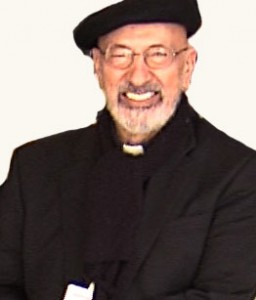 instrument of peace to those who pray in Our Lady’s garden of prayer. Â Anyone seeking
instrument of peace to those who pray in Our Lady’s garden of prayer. Â Anyone seeking 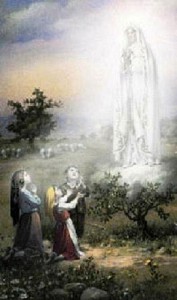 peace in the world, as well in their own lives, should turn to Our Lady and her Holy Rosary. Â The way to the face of God can be found in the Holy Rosary and all the mysteries contained in this treasury of grace.
peace in the world, as well in their own lives, should turn to Our Lady and her Holy Rosary. Â The way to the face of God can be found in the Holy Rosary and all the mysteries contained in this treasury of grace.
Tags: catholic, catholic podcast, catholic prayer, cathollc spirituality
This entry was posted on Tuesday, May 13th, 2014 at 7:36 am
You can follow any responses to this entry through the RSS 2.0 feed.
[powerpress]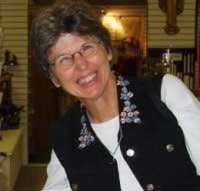
Join Bruce and I as we discuss Our Lady of Fatima with Teresa Monaghen of the Pro Sanctity Movement.
She also shares with us the complying memory of May 13, 1981 when she was in the square at St. Peter’s and St. John Paul II was shot.
For more on the Message of Fatima click here
Tags: catholic, catholic podcast, catholic prayer, cathollc spirituality, john paul ii, Join Bruce, teresa monaghen
This entry was posted on Tuesday, May 13th, 2014 at 5:32 am
You can follow any responses to this entry through the RSS 2.0 feed.
Fr. Andrew Apostoli does a tremendous job covering all the varied aspects of the events of Fatima and the  call  of Our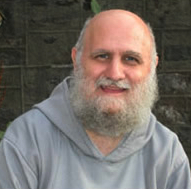 Lady of Fatima. He conveys the “immaculate” heart of the message, as well as tackling the “controversies” that have plagued the events over the years.  Because of the prophetic nature of her messages, Our Lady of Fatima has been the subject of much controversy and speculation. In this book, Father Andrew Apostoli carefully analyzes the events that took place in Fatima and clears up lingering questions and doubts about their meaning. He also challenges the reader to hear anew the call of Our Lady to prayer and sacrifice, for the world is ever in need of generous hearts willing to make reparation for those in danger of losing their way to God.
Lady of Fatima. He conveys the “immaculate” heart of the message, as well as tackling the “controversies” that have plagued the events over the years. Â Because of the prophetic nature of her messages, Our Lady of Fatima has been the subject of much controversy and speculation. In this book, Father Andrew Apostoli carefully analyzes the events that took place in Fatima and clears up lingering questions and doubts about their meaning. He also challenges the reader to hear anew the call of Our Lady to prayer and sacrifice, for the world is ever in need of generous hearts willing to make reparation for those in danger of losing their way to God.
[powerpress]
Check out the book here
“As was so dramatically obvious during the visit of Pope Benedict XVI to Fatima in May, 2010, Our Lady’s apparitions in 1917 remain powerfully compelling for us today. There she was an evangelist, calling us to prayer, conversion of heart, and penance, pointing to Jesus and repeating her words at Cana, ‘Do whatever He tells you.’ This book brings it all home.”
-Most Reverend Timothy Dolan, Archbishop of New York
“For us, Fatima is a sign of the presence of faith, of the fact that it is precisely from the little ones that faith gains new strength, one which is not limited to the little ones but has a message for the entire world and touches history here and now, and sheds light on this history . . . Even now there is tribulation, in every conceivable form, and power threatens to trample down faith. Even now, then, there is a need for the answer about which the Mother of God spoke to the children at Fatima.”
-Pope Benedict XVI
Tags: andrew apostoli, catholic, catholic podcast, catholic prayer, cathollc spirituality, lady of fatima, pope benedict xvi
This entry was posted on Tuesday, May 13th, 2014 at 12:28 am
You can follow any responses to this entry through the RSS 2.0 feed.
Dr. Matthew Bunson discusses the life, times and teachings of St. Peter Damian
-
Born: 1007, Ravenna, Italy
-
Died: February 23, 1072, Faenza, Italy
From Vatican.va, an excerpt from the teachings of Pope Benedict XVI General Audience 2009
St Peter Damian, who was essentially a man of prayer, meditation and contemplation, was also a fine theologian: his reflection on various doctrinal themes led him to important conclusions for life. Thus, for example, he expresses with clarity and liveliness the Trinitarian doctrine, already using, under the guidance of biblical and patristic texts, the three fundamental terms which were subsequently to become crucial also for the philosophy of the West: processio, relatio and persona (cf. Opusc. XXXVIII: PL CXLV, 633-642; and Opusc. II and III: ibid., 41 ff. and 58 ff). However, because theological analysis of the mystery led him to contemplate the intimate life of God and the dialogue of ineffable love between the three divine Persons, he drew ascetic conclusions from them for community life and even for relations between Latin and Greek Christians, divided on this topic. His meditation on the figure of Christ is significantly reflected in practical life, since the whole of Scripture is centred on him. The “Jews”, St Peter Damian notes, “through the pages of Sacred Scripture, bore Christ on their shoulders as it were” (Sermo XLVI, 15). Therefore Christ, he adds, must be the centre of the monk’s life: “May Christ be heard in our language, may Christ be seen in our life, may he be perceived in our hearts” (Sermo VIII, 5). Intimate union with Christ engages not only monks but all the baptized. Here we find a strong appeal for us too not to let ourselves be totally absorbed by the activities, problems and preoccupations of every day, forgetting that Jesus must truly be the centre of our life.
Communion with Christ creates among Christians a unity of love. In Letter 28, which is a brilliant ecclesiological treatise, Peter Damian develops a profound theology of the Church as communion. “Christ’s Church”, he writes, is united by the bond of charity to the point that just as she has many members so is she, mystically, entirely contained in a single member; in such a way that the whole universal Church is rightly called the one Bride of Christ in the singular, and each chosen soul, through the sacramental mystery, is considered fully Church”. This is important: not only that the whole universal Church should be united, but that the Church should be present in her totality in each one of us. Thus the service of the individual becomes “an expression of universality” (Ep 28, 9-23). However, the ideal image of “Holy Church” illustrated by Peter Damian does not correspond as he knew well to the reality of his time. For this reason he did not fear to denounce the state of corruption that existed in the monasteries and among the clergy, because, above all, of the practice of the conferral by the lay authorities of ecclesiastical offices; various Bishops and Abbots were behaving as the rulers of their subjects rather than as pastors of souls. Their moral life frequently left much to be desired. For this reason, in 1057 Peter Damian left his monastery with great reluctance and sorrow and accepted, if unwillingly, his appointment as Cardinal Bishop of Ostia. So it was that he entered fully into collaboration with the Popes in the difficult task of Church reform. He saw that to make his own contribution of helping in the work of the Church’s renewal contemplation did not suffice. He thus relinquished the beauty of the hermitage and courageously undertook numerous journeys and missions.
Because of his love for monastic life, 10 years later, in 1067, he obtained permission to return to Fonte Avellana and resigned from the Diocese of Ostia. However, the tranquillity he had longed for did not last long: two years later, he was sent to Frankfurt in an endeavour to prevent the divorce of Henry iv from his wife Bertha. And again, two years later, in 1071, he went to Monte Cassino for the consecration of the abbey church and at the beginning of 1072, to Ravenna, to re-establish peace with the local Archbishop who had supported the antipope bringing interdiction upon the city.
On the journey home to his hermitage, an unexpected illness obliged him to stop at the Benedictine Monastery of Santa Maria Vecchia Fuori Porta in Faenza, where he died in the night between 22 and 23 February 1072.
For more visit Vatican.va
Dr. Matthew Bunson, Senior Fellow of the St. Paul Center for Biblical Theology, is one of the United States’ leading authorities on the papacy and the Church.
His books include: The Encyclopedia of Catholic History; The Encyclopedia of Saints; Papal Wisdom; All Shall Be Well; Encyclopedia of the Roman Empire; and The Angelic Doctor: The Life and World of St. Thomas Aquinas; The Pope Encyclopedia; We Have a Pope! Benedict XVI, the first Catholic biography of the Holy Father in the English language; the Encyclopedia of U.S. Catholic History; Pope Francis. His also the editor of OSV’s “The Catholic Answer” magazine.
Tags: catholic, catholic podcast, catholic prayer, cathollc spirituality
This entry was posted on Tuesday, April 29th, 2014 at 8:37 am
You can follow any responses to this entry through the RSS 2.0 feed.
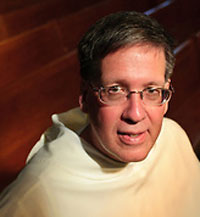 Episode 8Â St. Catherine of Siena: Her Life and Teachings with Fr. Thomas McDermott
Episode 8Â St. Catherine of Siena: Her Life and Teachings with Fr. Thomas McDermott
[powerpress]
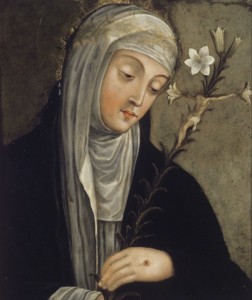 In this final episode, Fr. McDermott discuss the final step of the spiritual life which is actually comprised of two stages: “perfect love” and  “perfect union”. On the “Christ-Bridge” we find ourselves with St. Catherine at the “mouth” of Christ which corresponds to the first chapter of the “Song of Songs”.  Fr. McDermott expands on St. Catherine’s teachings on the role we have as sons and daughters of the Father.
In this final episode, Fr. McDermott discuss the final step of the spiritual life which is actually comprised of two stages: “perfect love” and  “perfect union”. On the “Christ-Bridge” we find ourselves with St. Catherine at the “mouth” of Christ which corresponds to the first chapter of the “Song of Songs”.  Fr. McDermott expands on St. Catherine’s teachings on the role we have as sons and daughters of the Father.
Fr. McDermott then offers a summation of St. Catherine’s teachings as a conclusion for our discussions.
Fr. Thomas McDermott, OP is Regent of Studies for the Dominican Province of St. Albert the Great and is the author of “Catherine of Siena: Spiritual Development in Her Life and Teaching” (Paulist, 2008) and “Filled with all the Fullness of God: An Introduction to Catholic Spirituality”. He obtained a doctorate in spiritual theology from the Angelicum and taught for several years at Kenrick-Glennon Seminary in St. Louis. He crrently serves as pastor at St. Vincent Ferrer, in Chicago, IL.
Tags: catholic, catholic podcast, catholic prayer, cathollc spirituality, McDermott, st catherine of siena, Thomas McDermott
This entry was posted on Tuesday, April 29th, 2014 at 5:24 am
You can follow any responses to this entry through the RSS 2.0 feed.

